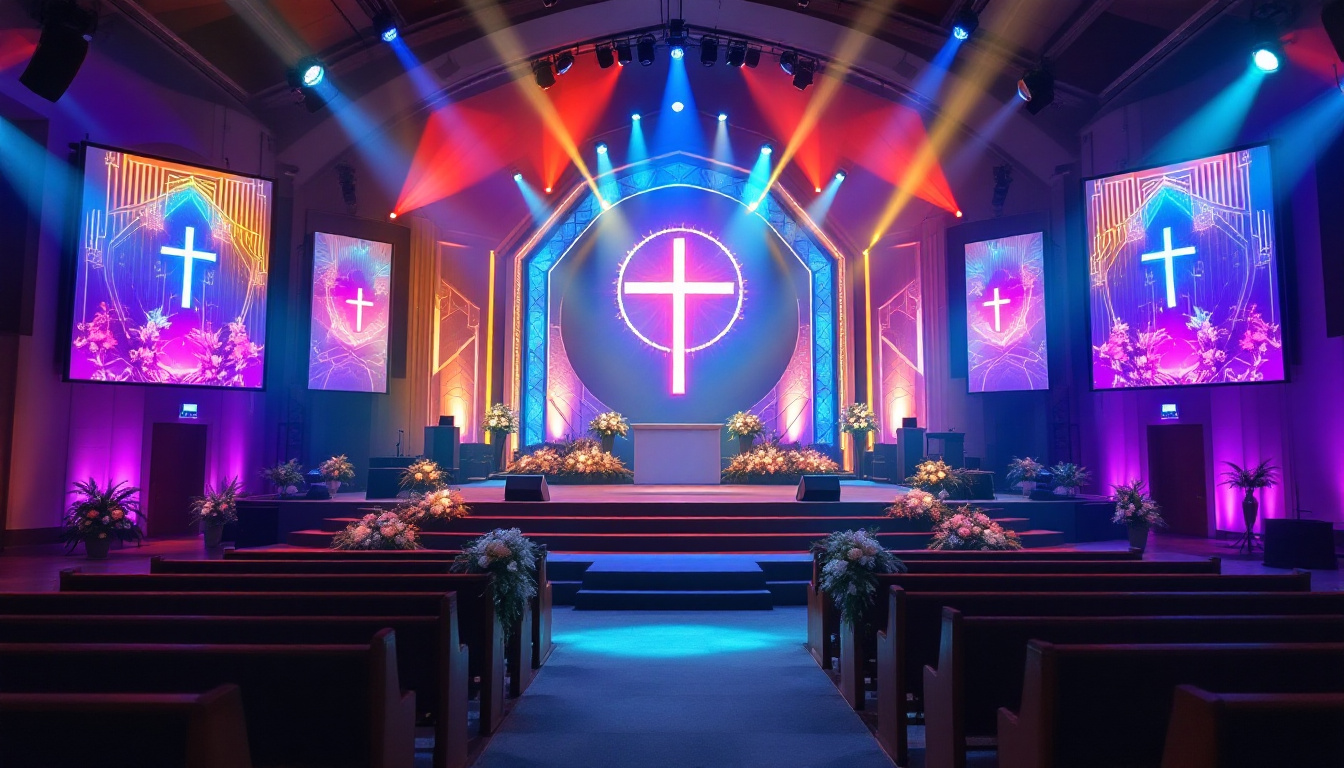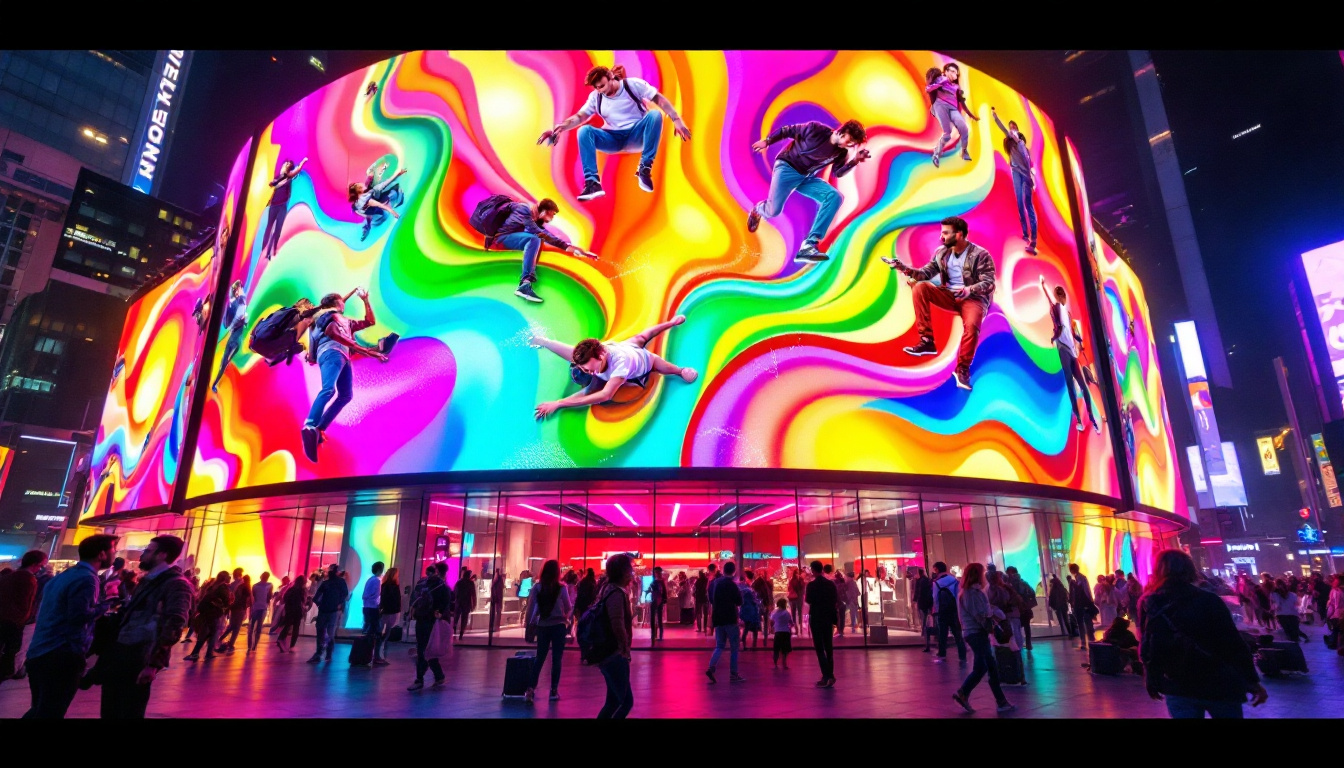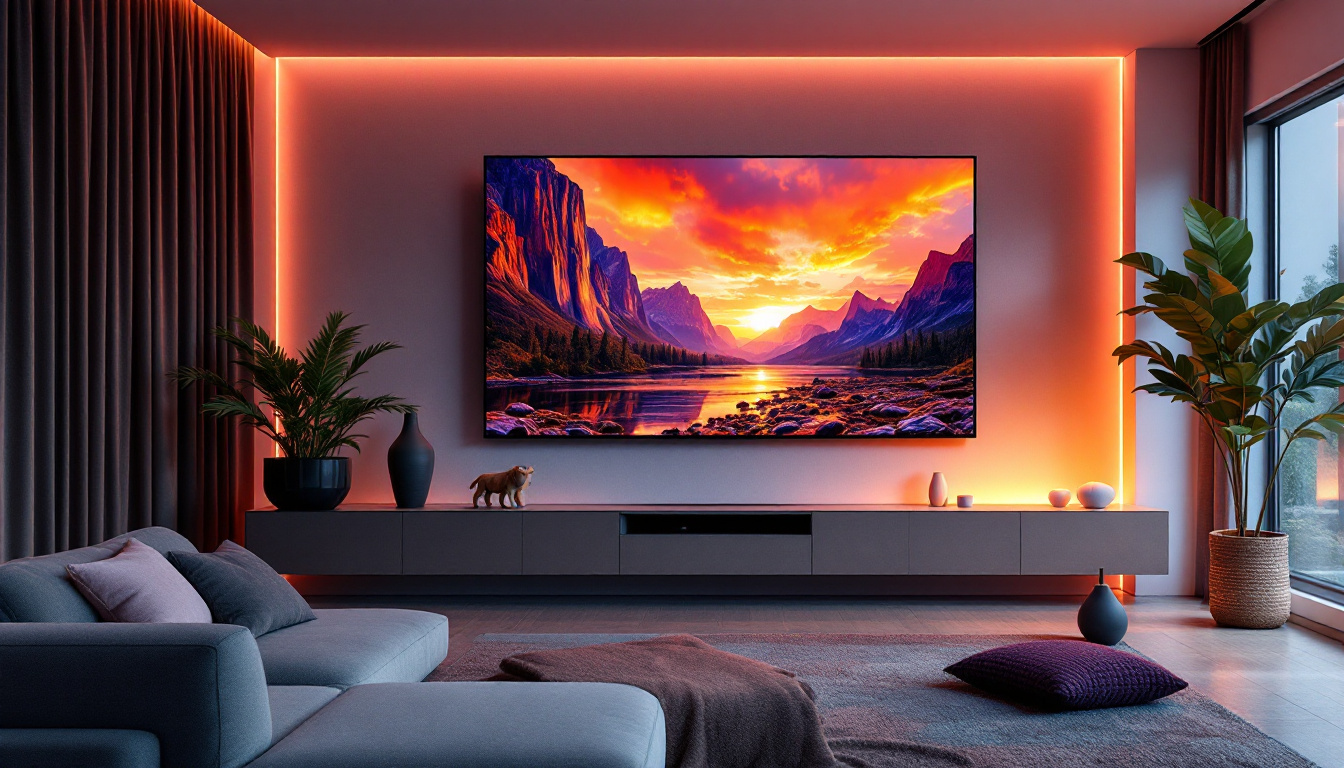In today’s digital age, churches are increasingly adopting technology to enhance their worship experience. One of the most significant innovations in this realm is the use of LED displays. These screens not only serve practical purposes but also create an engaging atmosphere for congregants. This article delves into the various aspects of church LED screens, exploring their benefits, types, and best practices for implementation.
Understanding LED Technology
Light Emitting Diode (LED) technology has revolutionized the way visual content is displayed. Unlike traditional screens, LED displays consist of numerous small diodes that emit light when an electric current passes through them. This technology allows for brighter images, improved energy efficiency, and a longer lifespan compared to older display methods. The durability of LED technology also means that it can withstand various environmental conditions, making it suitable for both indoor and outdoor applications. This resilience is particularly beneficial for churches that may host events in different settings, from intimate gatherings inside the sanctuary to large outdoor festivals.
LED screens come in various configurations, including indoor and outdoor options, each designed to cater to specific needs. The ability to customize these displays for different environments makes them a versatile choice for churches looking to enhance their visual communication. Additionally, the modular nature of LED technology allows for creative installations, such as curved or uniquely shaped displays that can fit into any architectural design, further enriching the worship experience.
How LED Displays Work
LED displays operate by combining red, green, and blue (RGB) diodes to create a full spectrum of colors. When these diodes are activated in varying intensities, they produce images and videos that are vivid and dynamic. The pixel pitch, or the distance between individual pixels, plays a crucial role in determining the display’s resolution and clarity. A well-calibrated LED display can deliver stunning visuals that captivate the audience, making it an ideal medium for storytelling during services.
For churches, selecting the right pixel pitch is essential. A smaller pixel pitch results in higher resolution and is ideal for close viewing, such as in an indoor sanctuary. Conversely, a larger pixel pitch may be suitable for outdoor settings where viewers are farther away. Understanding the viewing distance and the content that will be displayed can help church leaders make informed decisions about their LED investments, ensuring that the technology enhances their message rather than detracting from it.
Benefits of LED Displays in Churches
Implementing LED displays in a church setting offers numerous advantages. One of the most notable benefits is the enhanced visibility of content during services and events. Whether displaying hymn lyrics, sermon notes, or video presentations, LED screens ensure that all congregants can easily view the material, regardless of where they are seated. This inclusivity fosters a sense of community and engagement, allowing everyone to participate fully in the worship experience.
Moreover, LED displays are energy-efficient, consuming less power than traditional projection systems. This efficiency not only reduces operational costs but also aligns with the values of stewardship that many churches uphold. Furthermore, the longevity of LED technology means that churches can expect a significant return on their investment over time, as they will not need to frequently replace bulbs or components. With the ability to display a wide range of content—from announcements to inspirational videos—LED technology empowers churches to communicate effectively and creatively with their congregations, making each service a memorable occasion.
Types of LED Displays for Churches
When considering LED displays for a church, it is essential to understand the different types available. Each type serves unique purposes and environments, allowing churches to choose the best fit for their needs.
Indoor LED Displays
Indoor LED displays are designed for use within church buildings, such as sanctuaries, fellowship halls, or classrooms. These screens typically have a finer pixel pitch, providing high-resolution images that are ideal for close viewing. They can be used for various applications, including worship services, announcements, and educational presentations.
One popular configuration for indoor displays is the video wall, which consists of multiple screens arranged together to create a larger visual surface. This setup allows for dynamic content presentation and can be easily customized for different events.
Outdoor LED Displays
Outdoor LED displays are built to withstand the elements, featuring weather-resistant enclosures and brighter LEDs to combat sunlight. These screens are often used for marquee displays, allowing churches to share messages and event information with the surrounding community.
Outdoor installations can also enhance outreach efforts, attracting passersby and inviting them to participate in church activities. The ability to change content quickly and easily makes outdoor LED displays a powerful tool for communication.
Portable LED Displays
For churches that require flexibility, portable LED displays offer an excellent solution. These screens can be easily transported and set up for various events, such as conferences, outdoor services, or community gatherings. Portable displays can range from smaller setups to larger screens that still maintain high-quality visuals.
Investing in portable LED displays can significantly enhance a church’s outreach capabilities, allowing for engaging presentations in diverse locations.
Best Practices for Implementing LED Displays
Successfully integrating LED displays into a church environment requires careful planning and consideration. Here are some best practices to ensure a smooth implementation process.
Assessing Needs and Budget
Before purchasing LED displays, churches should assess their specific needs and budget. Consider factors such as the size of the congregation, the types of events hosted, and the desired content to be displayed. Establishing a clear budget will help narrow down options and prevent overspending.
Engaging with church leadership and members during this assessment phase can provide valuable insights into the community’s preferences and expectations, ensuring that the chosen solution aligns with the church’s mission and vision.
Choosing the Right Location
The placement of LED displays is crucial for maximizing their impact. Indoor screens should be positioned where they are easily visible to all congregants, while outdoor displays should be strategically placed for maximum exposure to foot traffic. Consider factors such as lighting conditions, viewing angles, and potential obstructions when selecting locations.
Additionally, it may be beneficial to conduct a site survey to evaluate how the displays will fit into the existing architecture and aesthetics of the church.
Content Creation and Management
Once the LED displays are installed, the next step is to develop engaging content. This includes creating visually appealing graphics, videos, and text that resonate with the congregation. Utilizing design software can help streamline this process, allowing for consistent branding and messaging.
Furthermore, establishing a content management system (CMS) can facilitate easy updates and scheduling of content. This system ensures that the displays remain fresh and relevant, enhancing the overall worship experience.
Challenges and Considerations
While LED displays offer numerous benefits, there are also challenges that churches may face during implementation. Understanding these challenges can help organizations prepare and adapt accordingly.
Technical Expertise
One of the primary challenges associated with LED displays is the need for technical expertise. Setting up and maintaining these systems can be complex, requiring knowledge of both hardware and software. Churches may need to invest in training for staff or volunteers to ensure they can effectively operate the displays.
Alternatively, partnering with a professional AV company can alleviate some of these concerns, providing the necessary support for installation and ongoing maintenance.
Budget Constraints
Budget constraints are a common concern for many churches, particularly when it comes to investing in new technology. While LED displays can be a significant upfront investment, it is essential to consider the long-term benefits and potential return on investment. This includes increased engagement, improved communication, and enhanced outreach efforts.
Exploring financing options, grants, or fundraising initiatives can also help mitigate the financial burden, making it easier for churches to adopt this technology.
Future Trends in LED Technology
The world of LED technology is constantly evolving, and staying informed about emerging trends can help churches make informed decisions regarding their displays.
Advancements in Resolution and Brightness
As technology progresses, LED displays are becoming increasingly advanced in terms of resolution and brightness. Higher pixel densities allow for sharper images, while improvements in brightness ensure visibility even in challenging lighting conditions. This trend is particularly beneficial for outdoor displays, where sunlight can often wash out content.
Churches should keep an eye on these advancements, as they can significantly enhance the quality of visual presentations and improve the overall worship experience.
Integration with Other Technologies
Another trend to watch is the integration of LED displays with other technologies. For instance, combining LED displays with live streaming capabilities allows churches to reach a broader audience, engaging both in-person and online congregants simultaneously. This integration can also facilitate interactive elements, such as live polls or social media feeds, enhancing participation during services.
As technology continues to advance, churches have the opportunity to leverage these innovations to create a more immersive and engaging worship experience.
Conclusion
Incorporating LED displays into a church setting can significantly enhance the worship experience, offering numerous benefits such as improved visibility, energy efficiency, and engagement. By understanding the different types of displays, best practices for implementation, and future trends in technology, churches can make informed decisions that align with their mission and vision.
As technology continues to evolve, embracing these advancements will enable churches to connect with their congregations in new and meaningful ways, fostering a vibrant community of faith.
Discover LumenMatrix LED Display Solutions
Ready to elevate your church’s worship experience with the latest in LED display technology? Look no further than LumenMatrix, a pioneer in crafting cutting-edge LED solutions that transform visual communication. From the intimacy of indoor gatherings to the grandeur of outdoor events, our diverse range of products, including Indoor and Outdoor LED Wall Displays, Vehicle LED Displays, and more, are designed to captivate and engage your congregation. Embrace the future of church services with LumenMatrix and create unforgettable moments of fellowship. Check out LumenMatrix LED Display Solutions today and witness how our innovative displays can enrich your community’s worship experience.































